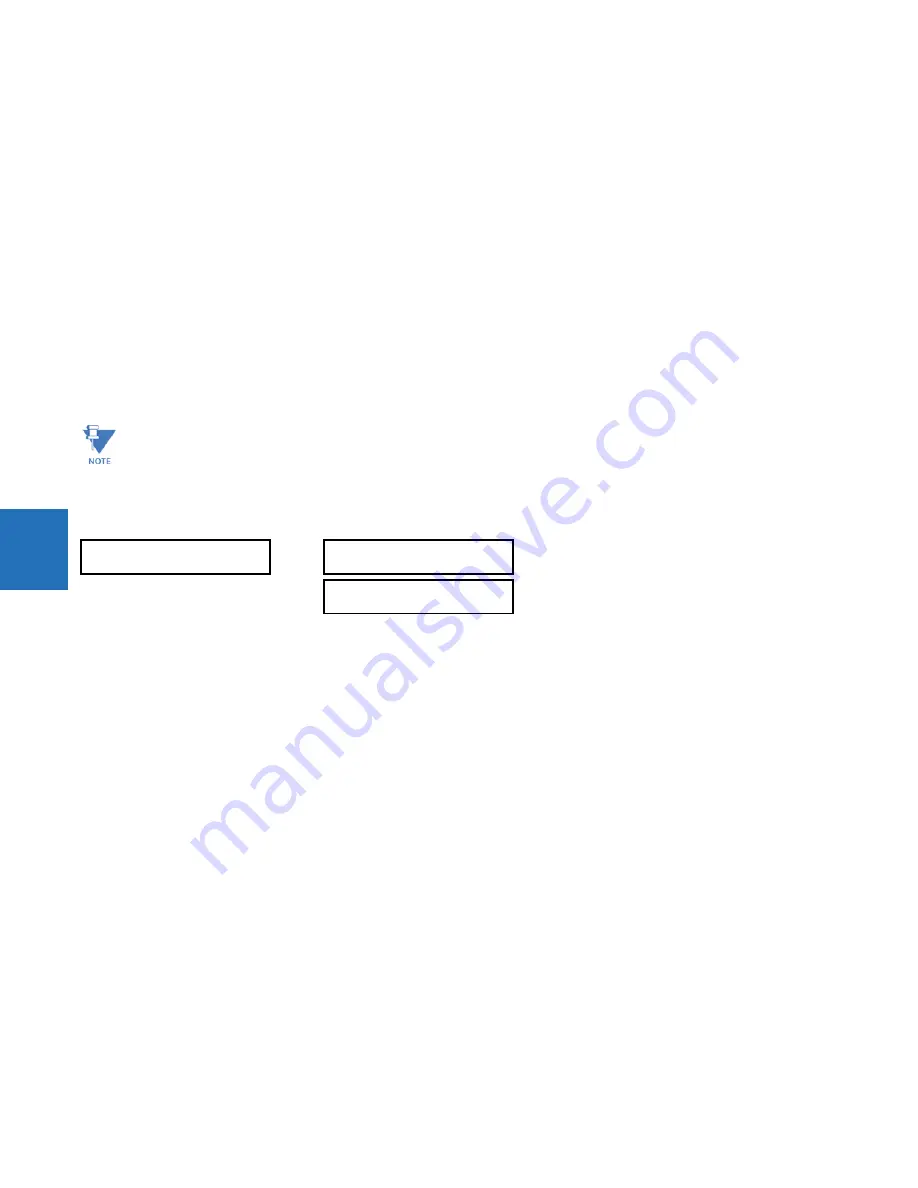
5-50
F35 MULTIPLE FEEDER PROTECTION SYSTEM – INSTRUCTION MANUAL
PRODUCT SETUP
CHAPTER 5: SETTINGS
5
The serial communication ports utilize the Modbus protocol, unless the port is configured for DNP or IEC 60870-5-103
operation. This allows the EnerVista UR Setup software to be used on the port. UR devices operate as Modbus slave
devices only.
For more information on the protocol, including the memory map table, see the UR Family Communications Guide.
MODBUS SLAVE ADDRESS
— When using the Modbus protocol on the RS232 port, the F35 responds regardless of the
MODBUS SLAVE ADDRESS
programmed. For the RS485 port, each device on the serial bus must have a unique slave address
from 1 to 254. Address 0 and addresses from 248 and up are reserved by the Modbus protocol specification, and so their
use here is not recommended. Address 0 is the broadcast address to which all Modbus slave devices listen. Addresses do
not have to be sequential, but no two devices can have the same address or conflicts resulting in errors occur. Generally,
starting at 1, set each device added to the link to use the next higher address. When using Modbus TCP/IP, the client must
use the programmed
MODBUS SLAVE ADDRESS
value in the Unit Identifier field.
MODBUS TCP PORT NUMBER
— Modbus over TCP/IP can also be used on any of the Ethernet ports. The listening TCP port 502
is reserved for Modbus communications, and only in exceptional cases when
MODBUS TCP PORT NUMBER
is set to any other
port. The
MODBUS TCP PORT NUMBER
setting sets the TCP port used by Modbus on Ethernet. A
MODBUS TCP PORT NUMBER
of
0 disables Modbus over TCP/IP, meaning closes the Modbus TCP port. When the port number is changed to 0, the change
takes effect when the F35 is restarted. When it is set to 0, use the front panel or serial port to communicate with the relay.
5.3.5.9 Protocol selection
SETTINGS
PRODUCT SETUP
COMMUNICATIONS
PROTOCOL
The
PROTOCOL
menu allows selection of one of the following protocols: DNP 3.0, IEC60870-104, or IEC60870-103.
SCADA PROTOCOL
— This setting selects the SCADA protocol on which the unit communicates, among DNP3.0, IEC 60870-
104, and IEC 60870-103, with DNP being the default. Options depend on order code. For any change to take effect, restart
the unit.
MMS CONNECTION TIMEOUT
— This setting specifies a time delay for the detection of network TCP connection lost. If there is
no data traffic on the TCP connection for greater than the time specified by this setting, the connection is aborted. This
frees up the connection to be re-used by a client. For any change to take effect, restart the unit.
The table shows which of DNP 3.0, IEC 60870-5-104, IEC 60870-5-103, and IEC 61850 protocols are operational on the
RS232, RS485, and Ethernet ports. It shows all possible combinations of the
PROTOCOL
and
DNP CHANNEL 1(2) PORT
settings.
Do not set more than one protocol to the same TCP/UDP port number, as this results in unreliable operation of
those protocols.
PROTOCOL
SCADA PROTOCOL:
DNP 3.0
Range: DNP 3.0, IEC 60870-5-104, IEC 60870-5-103
MMS CONNECTION
TIMEOUT: 120 s
Range: 10 to 7200 in steps of 10
















































